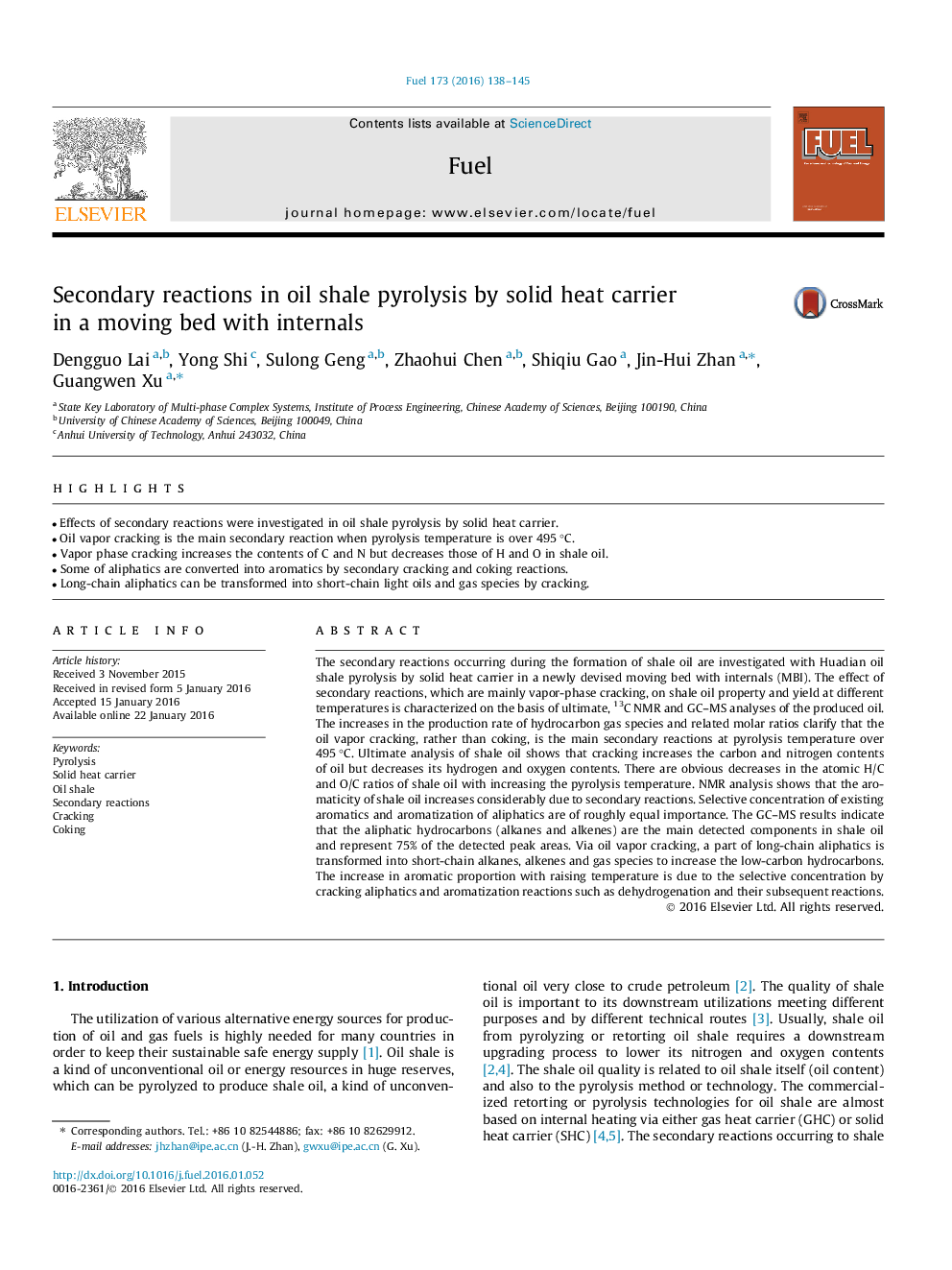| کد مقاله | کد نشریه | سال انتشار | مقاله انگلیسی | نسخه تمام متن |
|---|---|---|---|---|
| 205233 | 461101 | 2016 | 8 صفحه PDF | دانلود رایگان |

• Effects of secondary reactions were investigated in oil shale pyrolysis by solid heat carrier.
• Oil vapor cracking is the main secondary reaction when pyrolysis temperature is over 495 °C.
• Vapor phase cracking increases the contents of C and N but decreases those of H and O in shale oil.
• Some of aliphatics are converted into aromatics by secondary cracking and coking reactions.
• Long-chain aliphatics can be transformed into short-chain light oils and gas species by cracking.
The secondary reactions occurring during the formation of shale oil are investigated with Huadian oil shale pyrolysis by solid heat carrier in a newly devised moving bed with internals (MBI). The effect of secondary reactions, which are mainly vapor-phase cracking, on shale oil property and yield at different temperatures is characterized on the basis of ultimate, 13C NMR and GC–MS analyses of the produced oil. The increases in the production rate of hydrocarbon gas species and related molar ratios clarify that the oil vapor cracking, rather than coking, is the main secondary reactions at pyrolysis temperature over 495 °C. Ultimate analysis of shale oil shows that cracking increases the carbon and nitrogen contents of oil but decreases its hydrogen and oxygen contents. There are obvious decreases in the atomic H/C and O/C ratios of shale oil with increasing the pyrolysis temperature. NMR analysis shows that the aromaticity of shale oil increases considerably due to secondary reactions. Selective concentration of existing aromatics and aromatization of aliphatics are of roughly equal importance. The GC–MS results indicate that the aliphatic hydrocarbons (alkanes and alkenes) are the main detected components in shale oil and represent 75% of the detected peak areas. Via oil vapor cracking, a part of long-chain aliphatics is transformed into short-chain alkanes, alkenes and gas species to increase the low-carbon hydrocarbons. The increase in aromatic proportion with raising temperature is due to the selective concentration by cracking aliphatics and aromatization reactions such as dehydrogenation and their subsequent reactions.
Journal: Fuel - Volume 173, 1 June 2016, Pages 138–145